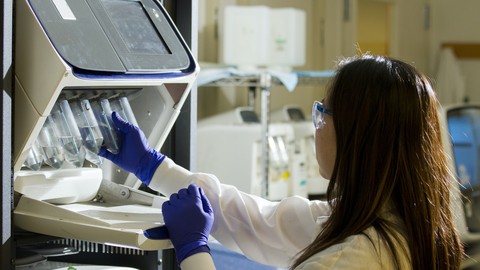
Vitamins and Coenzymes MCQ Practice Questions (Bio Chem)
-
Vitamins and Coenzymes
- Anyone who wants to learn Bio Chemistry
- Advanced Bio Chemistry
- Vitamins and Coenzymes
A vitamin is an organic molecule (or related set of molecules) that is an essential micronutrient which an organism needs in small quantities for the proper functioning of its metabolism. Essential nutrients cannot be synthesized in the organism, either at all or not in sufficient quantities, and therefore must be obtained through the diet. Vitamin C can be synthesized by some species but not by others; it is not a vitamin in the first instance but is in the second. The term vitamin does not include the three other groups of essential nutrients: minerals, essential fatty acids, and essential amino acids. Most vitamins are not single molecules, but groups of related molecules called vitamers. For example, vitamin E consists of four tocopherols and four tocotrienols. The thirteen vitamins required by human metabolism are vitamin A (as all-trans-retinol, all-trans-retinyl-esters, as well as all-trans-beta-carotene and other provitamin A carotenoids), vitamin B1 (thiamine), vitamin B2 (riboflavin), vitamin B3 (niacin), vitamin B5 (pantothenic acid), vitamin B6 (pyridoxine), vitamin B7 (biotin), vitamin B9 (folic acid or folate), vitamin B12 (cobalamins), vitamin C (ascorbic acid), vitamin D (calciferols), vitamin E (tocopherols and tocotrienols), and vitamin K (quinones)
A cofactor is a non-protein chemical compound or metallic ion that is required for an enzyme’s activity as a catalyst, a substance that increases the rate of a chemical reaction. Cofactors can be considered “helper molecules” that assist in biochemical transformations. The rates at which these happen are characterized in an area of study called enzyme kinetics. Cofactors typically differ from ligands in that they often derive their function by remaining bound.
Cofactors can be divided into two types, either inorganic ions, or complex organic molecules called coenzymes. Coenzymes are mostly derived from vitamins and other organic essential nutrients in small amounts. (Note that some scientists limit the use of the term “cofactor” to inorganic substances; both types are included here)
Coenzymes are further divided into two types. The first is called a “prosthetic group”, which consists of a coenzyme that is tightly or even covalently, and permanently bound to a protein. The second type of coenzymes are called “cosubstrates”, and are transiently bound to the protein. Cosubstrates may be released from a protein at some point, and then rebind later. Both prosthetic groups and cosubstrates have the same function, which is to facilitate the reaction of enzymes and protein. An inactive enzyme without the cofactor is called an apoenzyme, while the complete enzyme with cofactor is called a holoenzyme.
Some enzymes or enzyme complexes require several cofactors. For example, the multienzyme complex pyruvate dehydrogenase at the junction of glycolysis and the citric acid cycle requires five organic cofactors and one metal ion: loosely bound thiamine pyrophosphate (TPP), covalently bound lipoamide and flavin adenine dinucleotide (FAD), cosubstrates nicotinamide adenine dinucleotide (NAD+) and coenzyme A (CoA), and a metal ion (Mg2+)
These questions will give you basic idea for Examination Preparation and/or interview on Vitamins and Coenzymes.
Please Note:
- These questions are only for practice and understanding level of knowledge only. It is not necessary that these questions may or may not appear for examinations and/or interview questions
- In this practice test, because of large amount of questions (around 45 questions) some of questions may have repeated
- I had to put as 70% pass rate because there may also be wrong answers from my side
- Bio Chemistry
- Vitamins and Coenzymes






